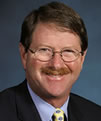Oh, What a Difference the Years Make!
Reflecting on our 20 years in the private club industry, I’m very excited as we begin our 21st year as KOPPLIN KUEBLER & WALLACE.
We have never deviated from our original three-fold mission statement: to improve the well-being of our client clubs, advance the careers of our candidates, and have fun every day. Our decision to add Tom as a partner reflects our company succession plan that allows for new thinking and generational leadership looking toward the future.
The next twenty years will be just as exciting, and it really begins with our “world class” team. Tom’s connectivity to the next generation of both members and management talent is critical for us to stay relevant in our business and it is also beneficial to our club clients as we help develop the new wave of club leaders.
We are grateful for the opportunity to serve the private club world doing what we love to do, and we are really excited about the future growth of our firm along with the private club industry.
 Richard M. Kopplin
Richard M. Kopplin
Dick Kopplin is a Partner of KOPPLIN KUEBLER & WALLACE, The Most Trusted Name in Private Club Executive Placement.


 Kurt D. Kuebler, CCM
Kurt D. Kuebler, CCM Thomas B. Wallace III, CCM
Thomas B. Wallace III, CCM Lisa Carroll
Lisa Carroll John R. “Jack” Sullivan, CCM
John R. “Jack” Sullivan, CCM Armen Suny
Armen Suny